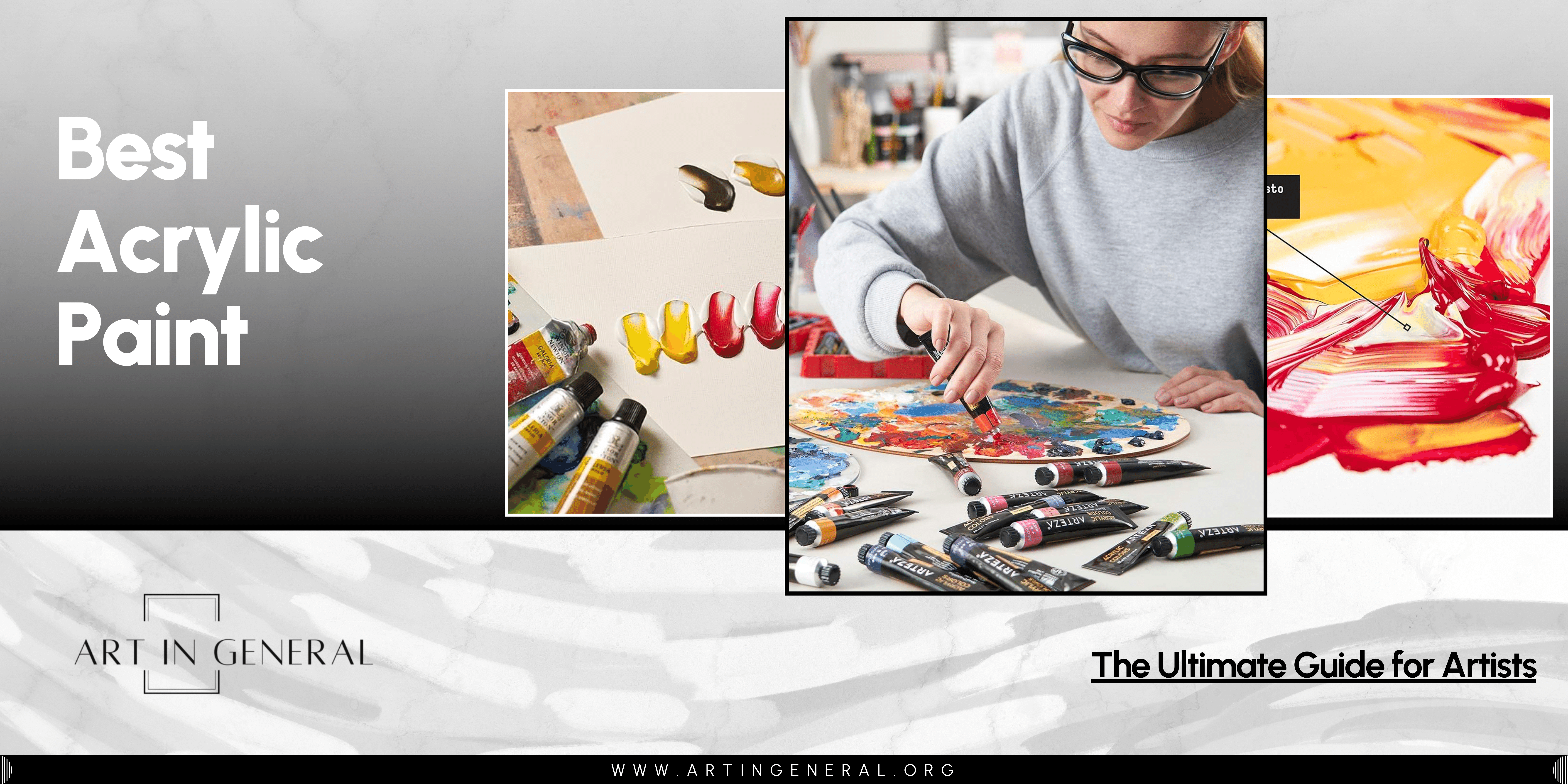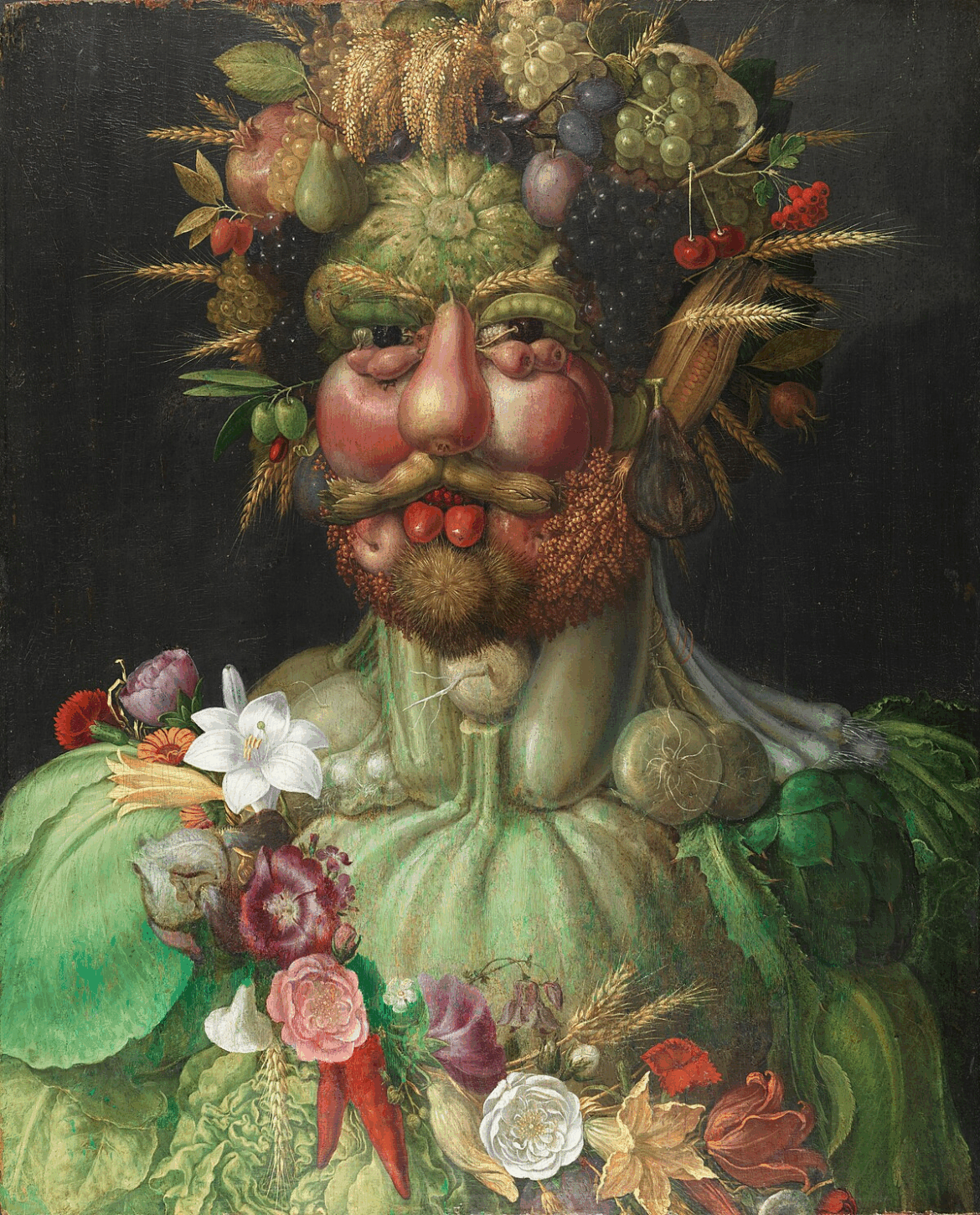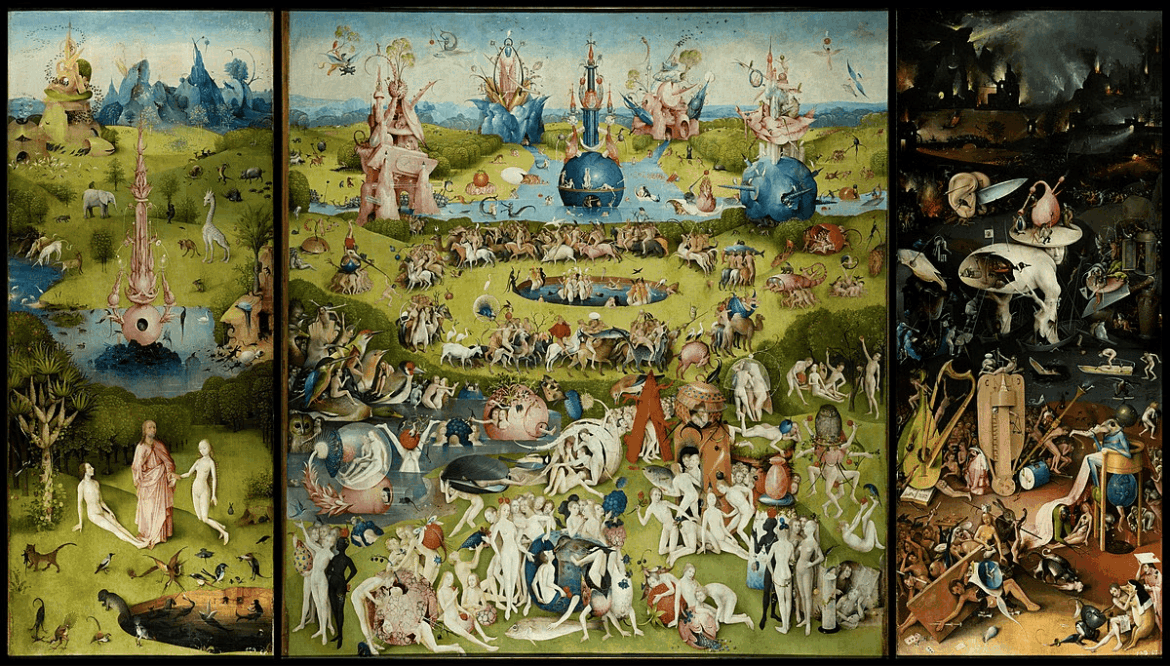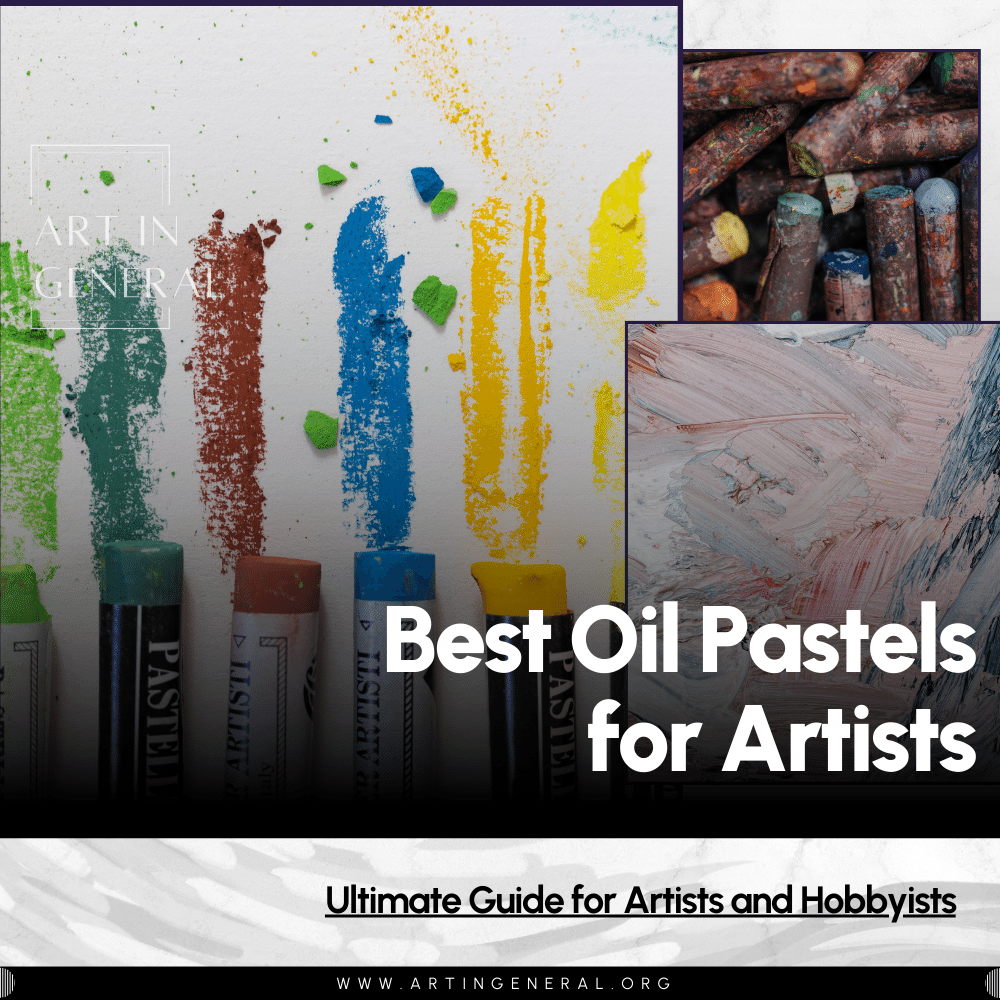
Acrylic paints are awesome because you can use them in any way you want, they can resemble oil paints or watercolors and can be dry fast enough that you do not have to wait too long to add further layers, so finding the best acrylic paint for everyone – from starters to pros – is crucial for any artist.

Acrylics are the best because they are easy to use, dry fast, and are very bright in colors but finding the best among the many many options in the market can be a bit of a challenge. This article is a tool to help you pick the most suitable acrylic paint for whatever you intend to make. We will examine different types of acrylics including those that are good and cheap for starters and those that the professionals love because of their excellent quality.
We’re going to talk about what makes different acrylic paints special, like how many colors they come in, how thick or thin they are, and if they fade in the light. After that, we’ll give you a list of the best paint brands for any budget or experience level, so you don’t have to worry about figuring it all out on your own and can go straight to painting. Let’s get started!
What is Acrylic Paint?
Acrylic paint is an art medium that consists of pigment suspended in a water-based acrylic polymer emulsion, that once it dries, becomes water-resistant. One of the advantages of acrylic painting is its versatility. It could be applied thinly for a wash effect or in a thick layer for an impasto effect, which resembles an oil paint look. In addition to this acrylic paint can be mixed with different mediums to change the paint’s consistency, opacity, and drying time, enabling the artists to use different techniques and styles.
Acrylic paint was invented in the middle of the 20th century and has been widely used by artists for many different reasons. It is the only paint that has a distinct property of blending well when wet and can be layered over once dry without disturbing the underlying surface. Acrylics are also preferable since they are durable and resistant to the effects of sunlight and aging.
Besides that, the fact that the use of soap and water can make for an easy clean-up while the paint is wet is one of the big pluses that makes acrylics so attractive to beginners and artists who dislike using the solvents demanded by oil painting. Furthermore, acrylic paint adheres well to different surfaces such as canvas, paper, wood, stone, and fabric which makes it a versatile option for artists that work with different mediums.
Factors to Consider When Choosing Acrylic Paint
Quality and Pigmentation

Quality refers to the paint’s quality, which will ensure the vibrancy, intensity, and longevity of your work. The level of pigmentation and quality of a paint can’t be determined without opening and using it first, however, one key factor in determining a paint’s quality is looking for paints labeled “artist” or “professional” grade for higher pigment loads. “Student” grade paints have lower pigmentation and are more affordable but may require multiple layers for the same intensity.
Viscosity

Viscosity refers to the level of thickness or fluidity of the paint, and the level of viscosity you choose will be completely up to your preference, the type of work you’re doing, and your project requirements. If you’re just starting then go for a fluid paint, medium viscosity will be good enough to be diluted with water, and will easily apply to your preferred surface. If you’re thinking of a more textured approach, and want to try impasto or palette knife applications then go for heavy-body acrylic paint. If you want to do airbrushing, try watercolor-ish effects or glazing techniques then fluid ink acrylics are the way to go.
Lightfastness

Lightfastness refers to the resistance to fading of paint when exposed to light, different pigments have different lightfastness ratings, and while acrylics are very permanent (resistant to water and other weather-related factors) pigments are still affected by light. Student grade paints are the most compromised, although not immediately noticeable, you might not want to sell artwork made with student grade paint or paint on exteriors and expect it to last more than a couple of years. Professional grade paints have the highest lightfastness ratings and are properly tested so you can expect them to last a lifetime without fading, yellowing, or changing significantly, so if your goal is to sell your artwork or paint on exteriors, then there’s no other choice than professional-grade acrylic paint.
Color Range
Color range is the variety of colors available within a brand’s line. On one hand, a brand could have a lot of rare and unique colors to choose from but only sell them separately, while on the other hand, some brands might have a very limited color range but sell comprehensively made sets taking the guesswork away from beginners who should be focusing on practicing color mixing and color theory.
Acrylics dry quickly, so if you already have experience with color mixing and color theory, pay attention to the brands that offer a wide range of colors to be able to get all the hues and shades for your work without having to mix them yourself.
Drying Time

Drying time refers to how quickly the paint dries after you apply it. Acrylic paint is known for drying pretty fast, which can be both good and bad, depending on what you’re trying to do.
If you like to work slowly and adjust your painting as you go, look for acrylics that stay wet longer (these might be labeled “open” or “interactive”). If you prefer fast drying times for quick layers, regular acrylics are your best bet.
Price
Acrylic paint prices vary a lot, depending on the grade, brand, and quality of the paint so you have to decide how much you’re willing to spend on paint.
If you’re just starting out or doing practice work, there’s no need to break the bank on the most expensive paints, get the high-quality student-grade ones and make sure to practice a lot. But if you’re working on something important or doing professional work, it might be worth investing in higher-quality paints because they’ll give you brighter colors, more durability, and better coverage with less paint.
Best Acrylic Paints for Artists in 2024
- Best Acrylic Paint Overall — Golden Heavy Body Acrylics
- Second Best Acrylic Paint — Liquitex Professional Heavy Body Acrylic Paint
- Best Budget-Friendly Acrylic Paint — Arteza Acrylic Paint Set
- Best Acrylic Paint for Professional Artists — M. Graham & Co. Artists’ Acrylics
- Best Acrylic Paint for Students — Winsor & Newton Galeria Acrylics
- Best Acrylic Paint for Beginners — Mont Marte Discovery School Acrylic
#1. Best Acrylic Paint Overall — Golden Heavy Body Acrylics

View Prices
About Golden Heavy Body Acrylics
Although many come close, there’s nothing better in the world of acrylic paint than Golden. Known for their exceptional quality, and high pigment concentration, these paints are thick, creamy, and buttery. Blending with them is a dream, the high pigment load makes a little bit go a long way and also makes it possible to try different techniques from glazing to impasto. The paint dilutes and mixes with different mediums and other paints from the brand, and it’s of archival quality. On the downside, these paints are very expensive be it per set or per tube compared to other alternatives, still if you’re a pro looking for the best, the quality and durability will be worth the investment.
What makes it great:
- Quality and Pigmentation: Artist Grade.
- Our Score: 8/10
- Viscosity: Heavy Body Acrylic Paint.
- Our Score: 9/10
- Lightfastness: Medium Lightfastness.
- Our Score: 8/10
- Color Range: 110 Colors.
- Our Score: 8/10
- Drying Time: Thin layer of paint: 20-30 minutes, thick layer of paint: 1-2 hours.
- Our Score: 8/10
- Price: $43.93
- Our Score: 8/10
Pros
- High pigment load
- Exceptional permanence
- Smooth, buttery texture
Cons
- Higher price
- May dry slowly
View Prices
2. Second Best Acrylic Paint — Liquitex Professional Heavy Body Acrylic Paint

View Prices
About Liquitex Heavy Body Acrylics
Liquitex is one of the oldest acrylic paint manufacturers and one of the best as well, their paints are high quality, have a high pigment load, and perform quite well, however,, their pigment concentration is not as high which is not great for glazing techniques and can make mixing a bit of a challenge. Still, it’s a great quality paint and it’s priced at a more affordable price than Golden, especially for the larger individual tubes, making it more accessible for students and professionals on a budget or working on large-scale pieces.
What makes it great:
- Quality and Pigmentation: Professional Grade.
- Our Score: 9/10
- Viscosity: Heavy Body Acrylic Paint.
- Our Score: 8/10
- Lightfastness: High Lightfastness.
- Our Score: 9/10
- Color Range: 105 Colors.
- Our Score: 8/10
- Drying Time: Thin layer of paint: 20-30 minutes, thick layer of paint: 1-2 hours.
- Our Score: 9/10
- Price: $46.27
- Our Score: 9/10
Pros
- Excellent consistency
- Great covering power
- Wide color selection
Cons
- Can be expensive
- Potentially slow drying
View Prices
3. Best Budget-Friendly Acrylic Paint — Arteza Acrylic Paint Set

View Prices
About Arteza Acrylic Paint
Arteza presents a very interesting alternative for beginners and students looking for good quality, pigmented paint but who are on a tight budget. They’re priced incredibly low for the quality they offer and are perfect for any art and craft project. They’re also very lightfast and pigmented and include a wide range of pre-mixed colors perfect for beginners and those who are not experienced in color mixing. The 60 tubes that the set includes can be a bit overwhelming and will most likely end up not being used but come in handy taking into consideration they dry quite fast and can dry as you mix them.
What makes it great:
- Quality and Pigmentation: Artist Grade.
- Our Score: 8/10
- Viscosity: Heavy Body Acrylic Paint.
- Our Score: 8/10
- Lightfastness: Medium Lightfastness.
- Our Score: 8/10
- Color Range: 120 Colors.
- Our Score: 9/10
- Drying Time: 30 minutes.
- Our Score: 8/10
- Price: $45.60
- Our Score: 8/10
Pros
- Affordable price
- Vibrant colors
- Versatile use
Cons
- Less pigment load
- Durability concerns
View Prices
4. Best Acrylic Paint for Professional Artists — M. Graham & Co. Artists’ Acrylics

View Prices
About M. Graham & Co. Artists’ Acrylics
- Graham is the answer for artists who want to get the best possible quality in their acrylic paints. These paints are especially remarkable for the richness and intensity of their hues, which is a result of a unique formula that includes a large amount of pigment and a special acrylic polymer, to ensure that the colors remain vibrant and true throughout time. M. Graham colors are specially engineered to be durable and versatile and can be applied to many different surfaces, from cardboard to fabric, their unique formulations give you up to an hour of drying time allowing you to work longer on details and being more forgiving of mistakes.
What makes it great:
- Quality and Pigmentation: Professional Grade.
- Our Score: 9/10
- Viscosity: Fluid ink acrylics.
- Our Score: 8/10
- Lightfastness: High Lightfastness.
- Our Score: 9/10
- Color Range: 70 Colors.
- Our Score: 7/10
- Drying Time: Up to 1 hour.
- Our Score: 8/10
- Price: $45.71
- Our Score: 8/10
Pros
- Highly pigmented
- Smooth application
- Long-lasting vibrancy
Cons
- Premium pricing
- Limited availability
- May dry fast
View Prices
5. Best Acrylic Paint for Students — Winsor & Newton Galeria Acrylics

View Prices
About Winsor & Newton Galeria Acrylics
The Galeria Acrylics line of Winsor & Newton poses a perfect solution for quality-focused artists on a budget. They are famous for their extraordinary pigment strength, brightness, and smoothness, which can be explained by the fact that they become the number one choice not only among students of art but also among professional masters of painting as well.
Galeria Acrylics give the paintings the perfect coverage and a satin finish with which your art will keep as good as new for many years. Their wide color range is created to be flexible catering for multiple styles and techniques, and its consistency is perfect for different applications, whether it’s using delicate brushwork, painting large-scale abstracts, or fiddling with textures.
What makes it great:
- Quality and Pigmentation: Professional Grade.
- Our Score: 9/10
- Viscosity: Heavy Body Acrylic Paint.
- Our Score: 9/10
- Lightfastness: High Lightfastness.
- Our Score: 7/10
- Color Range: 108 Colors.
- Our Score: 7/10
- Drying Time: Thin layer of paint: 20-30 minutes, thick layer of paint: 20-30 minutes.
- Our Score: 9/10
- Price: $28.13
- Our Score: 8/10
Pros
- Good pigment strength
- Economical choice
Cons
- Less color intensity
- May fade quicker
- Thinner consistency
View Prices
6. Best Acrylic Paint for Beginners — Mont Marte Discovery School Acrylic

View Prices
About Mont Marte Acrylic Paint
Mont Marte Discovery School acrylic paint tends to be a favorite for those who are just starting their painting journey because it is an affordable solution that does not compromise on quality. Made with the beginner artist in mind, the paints are designed to provide the best possible coverage on pretty much any surface. Quick drying times mean that there is no need to crunch time between layers, and the fact that no toxic ingredients are used in these paints makes them very safe for artists of all ages.
Plus the price is super affordable and the color range is great.
What makes it great:
- Quality and Pigmentation: Student Grade.
- Our Score: 7/10
- Viscosity: Heavy Body Acrylic Paint.
- Our Score: 8/10
- Lightfastness: Normal Lightfastness.
- Our Score: 7/10
- Color Range: 100 Colors.
- Our Score: 8/10
- Drying Time: Thin layer of paint: 20-30 minutes, thick layer of paint: 1-2 hours.
- Our Score: 8/10
- Price: $22.94
- Our Score: 8/10
Pros
- Beginner-friendly
- Cost-effective
- Easy to use
Cons
- Lower pigment density
- Not for professionals
View Prices
Types of Acrylic Paint
There are different types of acrylic paint, however, according to their consistency, we can find heavy body paints, sof body paints, fluid paints, and acrylic ink.

Heavy-body Acrylics
Heavy body paints are thick; made with oil paint consistency in mind, these paints are buttery and more concentrated, perfect for techniques that require heavy brushstrokes, texture applications, and impasto. These paints have a higher pigment load, and a much longer drying time compared to fluid acrylics and they can be mixed with other acrylic mediums to change their properties.
Fluid Acrylics
Also called low-viscosity acrylics, fluid acrylics are a type of paint characterized by a smooth, creamy consistency that applies evenly. They’re the most commonly found acrylics and are used in a variety of projects, from art to crafts and even home decor. They are great for direct painting, glazing, pouring, and a variety of techniques, and although they have a quicker drying time they also can be mixed with other acrylic mediums to change their transparency and drying time.
Acrylic Ink
Acrylic ink is a very pigmented, very fluid form of acrylic paint, as its name indicates, is like ink but made of acrylic particles which means is permanent, waterproof, and resistant to fading once it dries. Perfect for use with dip pens, calligraphy, drawing, and airbrushing.
Student-Grade vs. Professional-Grade Acrylic Paint
Another way to classify acrylic paint is according to the grade, we have student-grade and professional or artist-grade acrylic paint. They are very different in several aspects besides quality, like pigmentation, consistency, color accuracy, and of course, price.
Student-grade acrylic paint contains a lower pigment load and more fillers, which makes color mixing sometimes inaccurate, less vibrant, and muddy. The consistency of the paint will also be more fluid (sometimes too fluid) affecting the application and finish.
The colors will also be made from synthetic or not pure pigments, resulting in non-accurate colors and a limited color range which might be enough in the initial stages of your learning journey but not suited for professional work.
Professional-grade acrylic paint has all the best qualities, is made with pure pigments, and has fewer fillers, plus the consistency is better and all, but it’s also very expensive, making it impossible to practice constantly without breaking the bank.





Leave a Reply